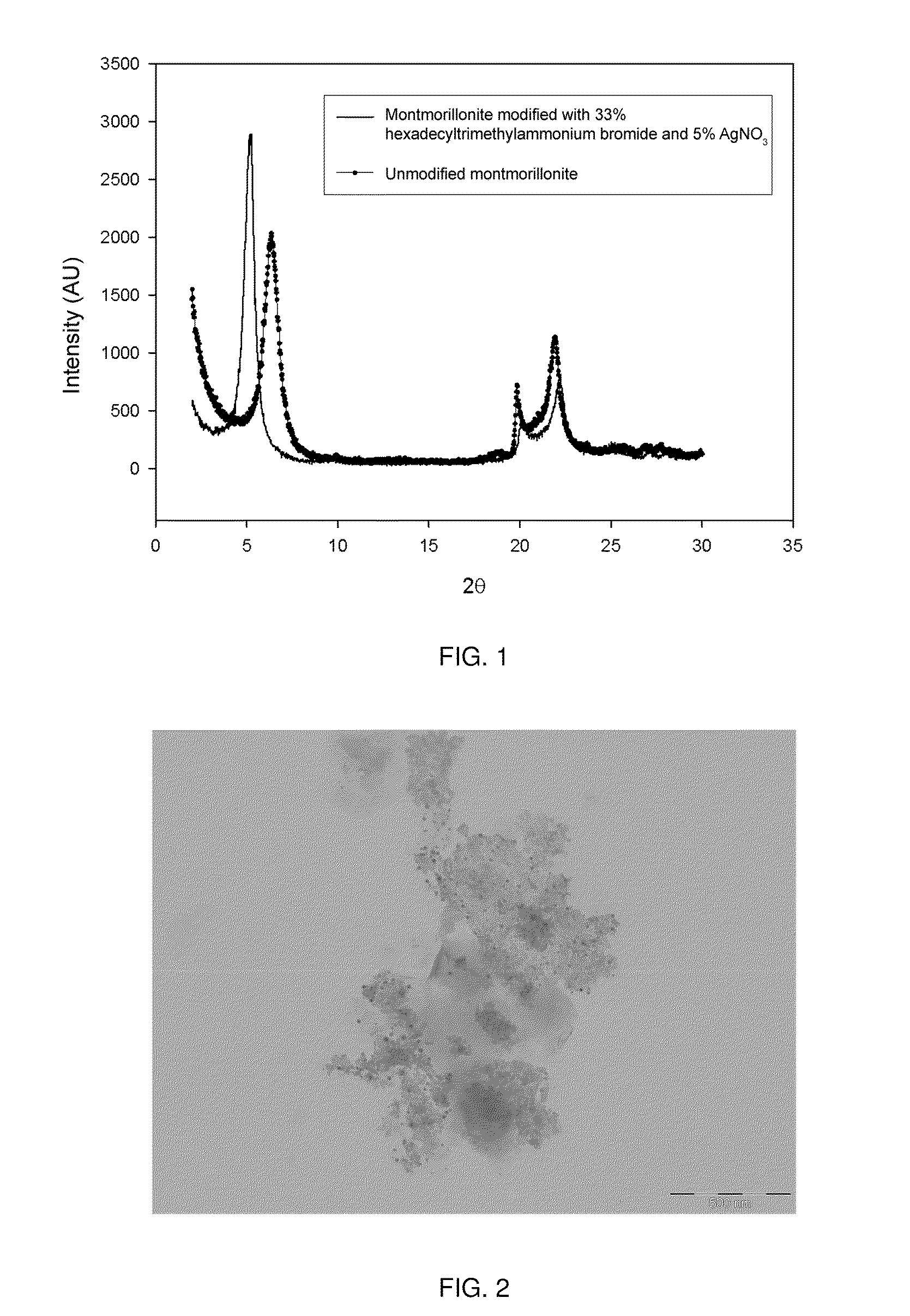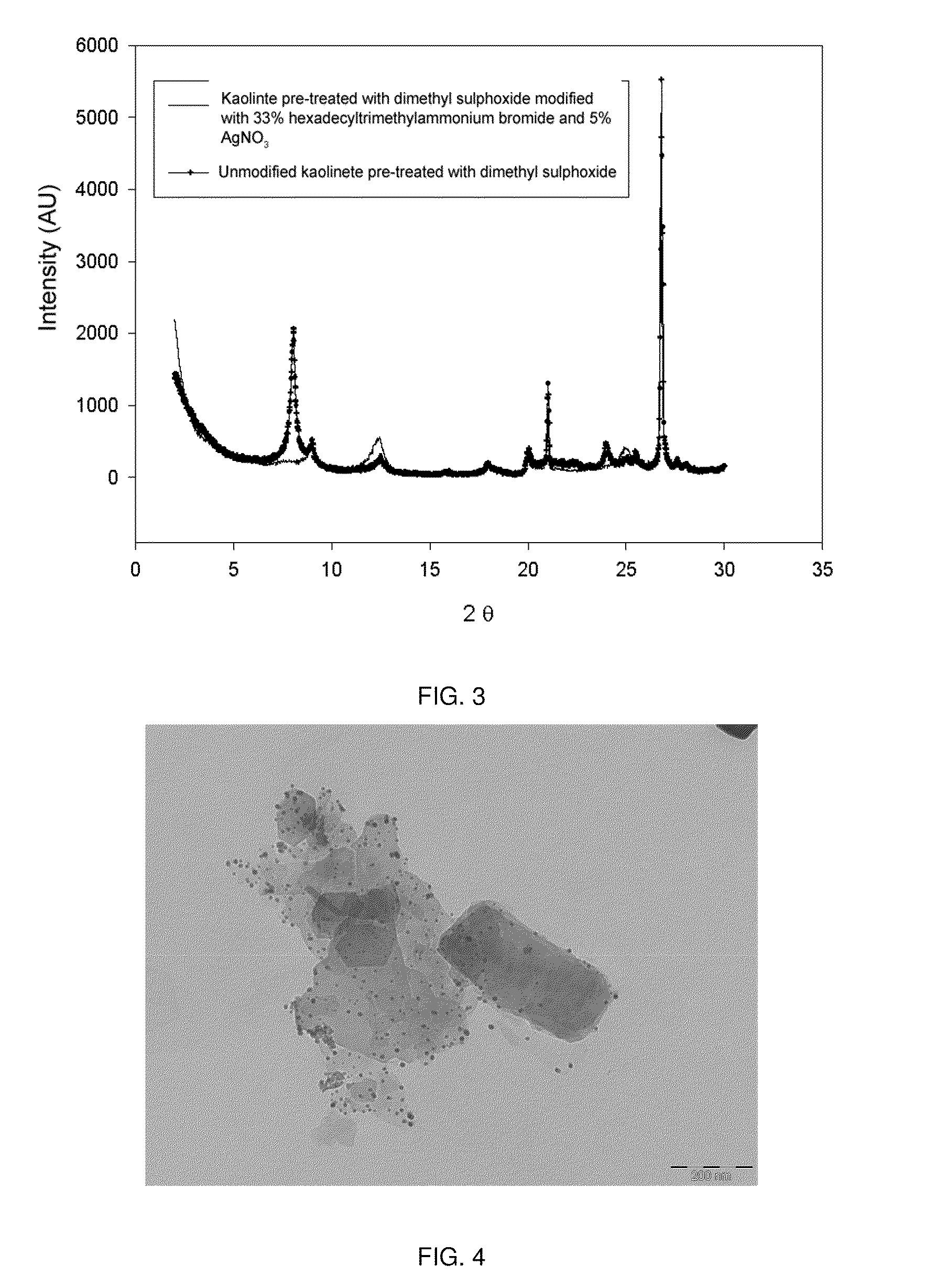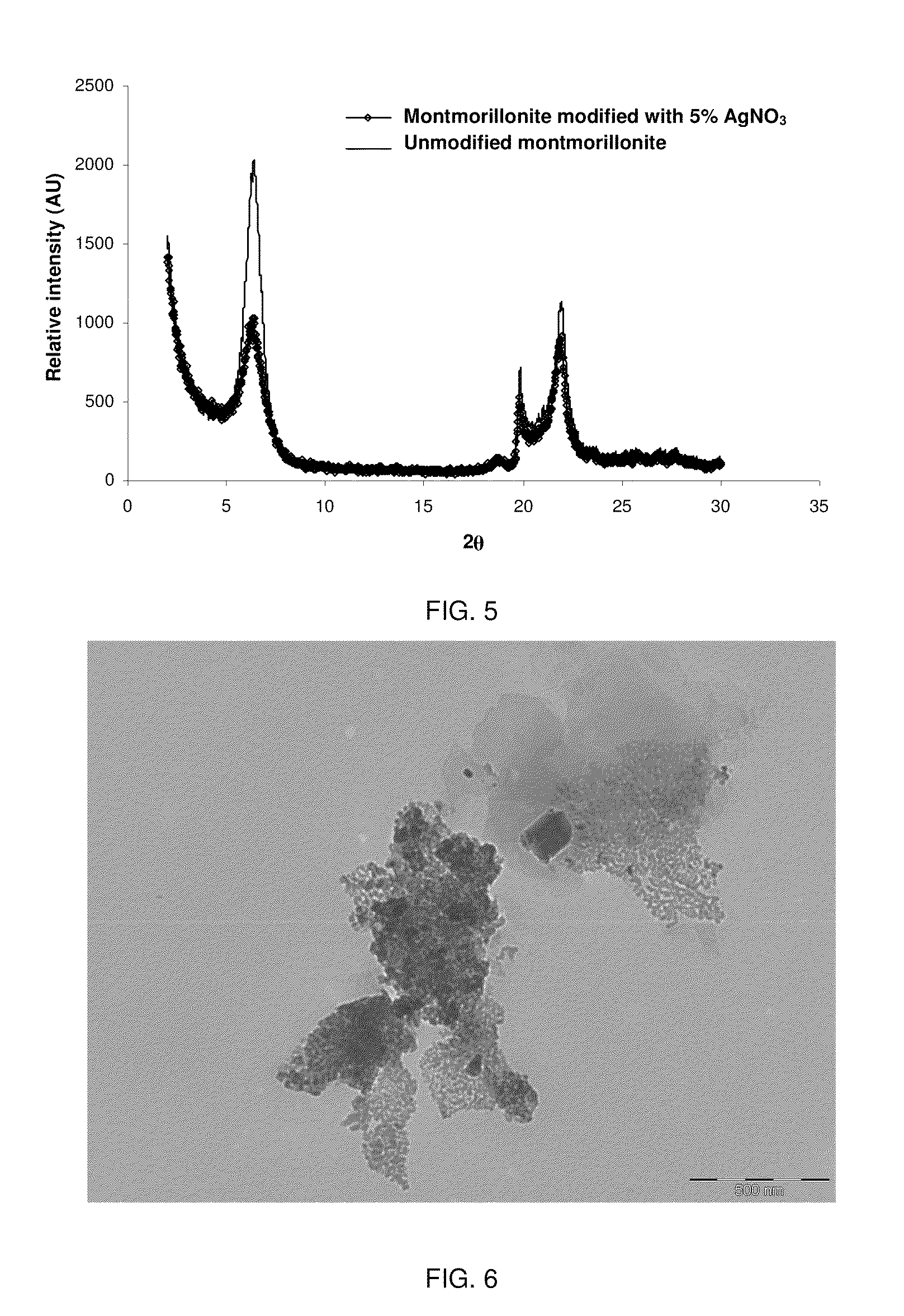Active nanocomposite materials and production method thereof
a technology of bioactive nanocomposites and nanocomposite materials, which is applied in the field of active and/or bioactive nanocomposite materials, can solve the problems of food changes, physical, chemical and organoleptic properties changes, and no specific design has been published to date that describes the manufacture of nanocomposites
- Summary
- Abstract
- Description
- Claims
- Application Information
AI Technical Summary
Benefits of technology
Problems solved by technology
Method used
Image
Examples
example 1
Synthesis and Intercalation of Metallic Silver Nanoparticles in Montmorillonite-Type Clays Modified with 33% by Weight of Hexadecyltrimethylammonium Bromide, Using Ethanol as the Reducing Agent
[0075]First, the clay, already modified with 33% hexadecyltrimethylammonium bromide, was dispersed in ethanol at room temperature, using 1 g of clay per 100 g solvent, and 0.05 g AgNO3 added to the dispersion. The dispersion was refluxed at 70° C. for 6 hours; then the dispersion was decanted, excess solvent removed and the clay was dried in a convection oven for 1 h at 70° C. The resulting clay was characterised by X-ray diffraction (see FIG. 1) and transmission electron microscopy (see FIG. 2). The diffractograms of FIG. 1 show that the modifying agents (particles of silver and hexadecyltrimethylammonium bromide) were intercalated between the layers, according to the displacement of the basal peak at very low angles (from 6.38 to 5.26). From the TEM images, it was determined that in this cas...
example 2
Synthesis and Intercalation of Metallic Silver Nanoparticles in Kaolinite-Type Clays Ore-Treated with Dimethyl Sulphoxide (DMSO) and Modified with 33% by Weight of Hexadecyltrimethylammonium Bromide, Using UV Radiation as the Reducing Agent
[0078]First, the kaolinite-type clay was pre-treated with dimethyl sulphoxide to increase interlaminar spacing. For this, 60 g of clay was dispersed in 300 ml of dimethyl sulphoxide, and was stirred magnetically at 65° C. for 24 hours. Next the clay was filtered by suction, washed with methanol and dried in a convection oven at 80° C. for 6 hours.
[0079]When the clay pre-treated with dimethyl sulphoxide was dry, it was dispersed in water, using 1 g clay per 100 g solvent, and 0.05 g of AgNO3 and 0.33 g hexadecyltrimethylammonium bromide were added. The dispersion was maintained under constant vigorous magnetic stirring and subjected to strong UV radiation of 30 W and 235 nm wavelength. The time for exposure to UV radiation was 24 hours. Then the so...
example 3
Synthesis and Intercalation of Nanoparticles of Metallic Silver in Unmodified Montmorillonite-Type Clays, Using Ethanol as the Reducing Agent
[0081]First, the clay was dispersed in ethanol at room temperature, using 1 g of clay per 100 g solvent, and 0.1 g AgNO3 was added to the dispersion. The dispersion was refluxed at 70° C. for 6 hours; then the dispersion was decanted, excess solvent removed and the clay was dried in a convection oven for 1 hour at 70° C. The clay obtained was characterised using X-ray diffraction (see FIG. 5). The diffractograms of FIG. 5 indicate that the basal peak signal (6.38; 2θ) was not displaced after the incorporation of silver nanoparticles in the clay.
[0082]In another study, the antimicrobial ability of this clay with 5% silver nitrate was determined against Salmonella spp. A pathogenic microorganism of food origin, Salmonella spp. CECT 554, was used, which was obtained from the Spanish Collection of Culture Types (Valencia, Spain). The study conditio...
PUM
| Property | Measurement | Unit |
|---|---|---|
| particle sizes | aaaaa | aaaaa |
| particle size | aaaaa | aaaaa |
| d90 particle size | aaaaa | aaaaa |
Abstract
Description
Claims
Application Information
 Login to View More
Login to View More - R&D
- Intellectual Property
- Life Sciences
- Materials
- Tech Scout
- Unparalleled Data Quality
- Higher Quality Content
- 60% Fewer Hallucinations
Browse by: Latest US Patents, China's latest patents, Technical Efficacy Thesaurus, Application Domain, Technology Topic, Popular Technical Reports.
© 2025 PatSnap. All rights reserved.Legal|Privacy policy|Modern Slavery Act Transparency Statement|Sitemap|About US| Contact US: help@patsnap.com



